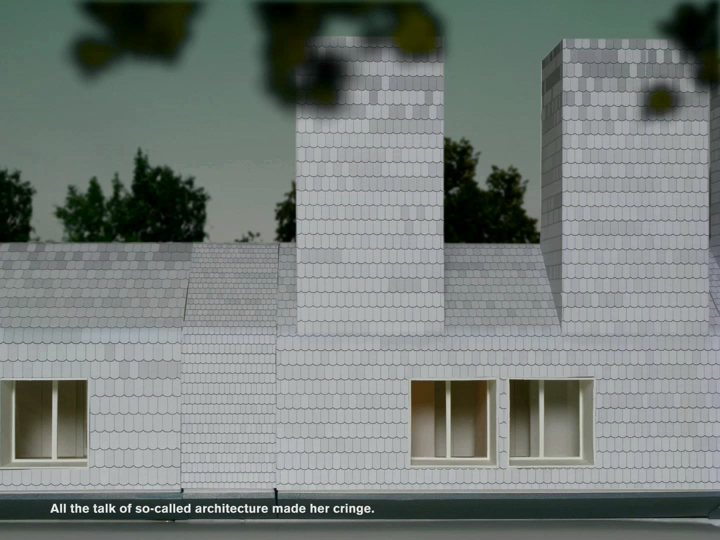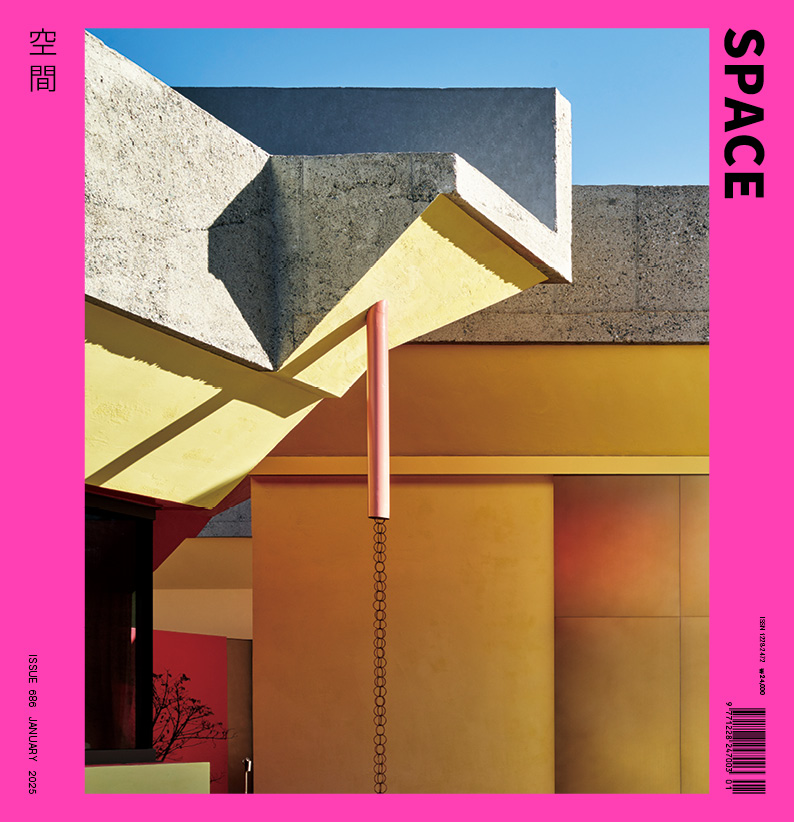SPACE January 2025 (No. 686)

Exhibition view of ‘Frames of Architecture’ ©Kim Bokyoung

Still cut of The Romance of Systems ©MOS Architects / Image courtesy of Seoul Museum of Art
How might architecture as a spatial art appear from the perspective of video as a temporal art? Instead of presenting well-known architecture or architects, Bang Soyeon (curator, Seoul Museum of Art), who organised the exhibition ‘Frames of Architecture’, curated videos made by architects and artists about architecture. Bang wanted to highlight architecture from a world perspective and explore international attitudes to its representation rather than relying on its understanding an object for media consumption such as a movie and drama played on various social media channels.
Upon following the guiding arrows and entering the exhibition room, one can hear a recorded dialogue between two architects being played through a monitor screen (which is hanging on a ㄱ-shaped wall) with a background image of architectural models and elements such as windows and chimneys. This work is The Romance of Systems (2010) by MOS Architects (co-principals, Hilary Sample, Michael Meredith) which is a New York-based architectural studio. The two architects in the video who respectively represent a radical formalist and radical functionalist love but fail to understand one another. The dialogue and the images of architectural forms in the background reveal how MOS Architects values ideas surrounding architecture and the expansion of architectural boundaries more than realising large and eye-catching architectural projects.
Similarly, Park Sunmin’s Architecture of Mushroom (2019) features a mutually contrasting background and narration. Park took a closeup video of forest mushrooms growing in Gotjawal, Jeju in 2017 and voiced them with narrations by 13 Korean and international architects. This work juxtaposes mushrooms viewed from a microscopic perspective and human architecture from visual and auditory perspectives. This unusual combination invites the audience to make various interpretations—such as the relatively more obvious metaphoric connection between mushrooms or natural cycles with architecture or relatively more complex and imaginative contemplations and impressions.
On the other side of the exhibition room, Park Junebum’s Rhombus or Parallelogram (2018 – 2023) – which is a reimagined footage of a new construction site – and Lee Yoonseok’s (principal, Various Artists and Architects…) Demolition Diary: 39 Days of the Cheongpa-dong Chimney (2021) are placed adjacent to one another. The two contrasting scenes between that of a new construction site and a demolition site seem to remind us of the short (around 30 years) life expectancy of buildings in Korea.
The next room features the works by Hong Buhm and Wobistdu Studio. Both works are about virtual space. In his work The moments, first movement (2024), Hong Buhm, who once said that ‘space is a storage for memories,’ presents a somewhat familiar and yet foreign virtual space that is made with space sourced from personal memories. On the other hand, Wobistdu Studio’s Rundmahal Around (2022) showcases a world after death. The weightless virtual grave of hypnotic colours attaches a surreal and fantasy-like sentiment to the concept of death. Wobistdu Studio demonstrates how virtual space can introduce new memories and experiences by transporting architectural physicality to the non-physical world.
This exhibition, which also features OSLAVIA – The Cave of the Past Future (2021) by Bêka & Lemoine (whose works are owned by the Museum of Modern Art as permanent collection) and Stream-Line (2022 – 2024) by NANA & FELIX which features seven simultaneous videos like an orchestra, will be open at the Nam-Seoul Museum of Art until June 1.





